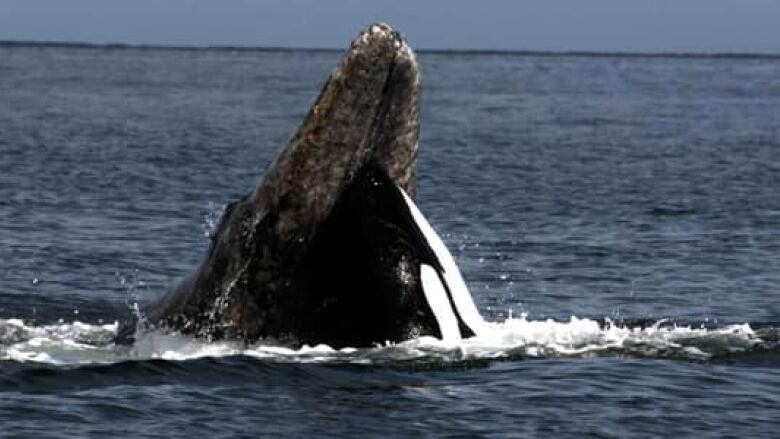Orcas feast on baby grey whales

Up to a third of Eastern Pacific grey whale calves born each year are eaten by orcas that prowl the tip of the Alaskan Peninsula.
The orcas, also known as killer whales, eat almost nothing but grey whale calves and yearlings for a month each spring, said a new study led by Lance Barrett-Lennard, a whale researcher at the Vancouver Aquarium and the University of British Columbia.
The orcas stake out a key corner along the grey whales' migration route between southern California and the Bering Sea.
Audio
Lance Barrett-Lennard talks to Quirks & Quarks Feb. 12 at noon on CBC Radio One.
"They're really at a point of a moveable feast," Barrett-Lennard told Quirks & Quarks in an interview that will air Saturday. "This is a place where they can stay in one place and the prey come to them."
Barrett-Lennard and collaborators at the North Gulf Oceanic Society, the National Oceanic and Atmospheric Administration and the Center for Whale Research spent four years studying a group of orcas known as "transient" killer whales because they wander a lot from place to place hunting marine mammals except during the grey whale season.
The researchersdetailed the orcas' hunting habits in a paper published in January as part of the Marine Ecology Progress Series.
Mothers fight to protect calves
The researchers found that groups of five or sixorcas work together to separate calves from their mothers, who are about 50 per cent larger than the average orca and often put up a vigorous fight.
If the orcas succeed, they drive the calf to waters about 20 to 40 metres deep and drown it.
"They're pulling on its pectoral flippers, they're pushing on its head, they're rolling it upside down sometimes, they're rolling over its blowhole as it tries to breathe," Barrett-Lennard said. The calf rarely lasts long.
Finding the right depth ensures the massive feast won't sink out of reach, as orcas can't dive very deeply, Barrett-Lennard said.
The researchers observed that thekiller whaleskeep coming back for leftovers over the next five or six days, even though orcas don'tnormally eat food unless it has been freshly killed.
While it sounds like orcas eat a lot of grey whale calves, they probably have been eating the same proportion every year for so long that it doesn't have a huge influence on the overall grey whale population, Barrett-Lennard said.
"But it sure makes a big difference for an individual grey whale that has to spend its whole life looking over its shoulder."












_(720p).jpg)


 OFFICIAL HD MUSIC VIDEO.jpg)
.jpg)



























































































